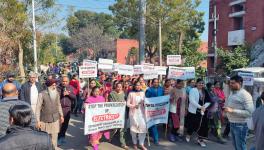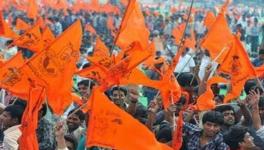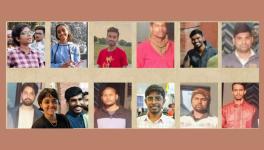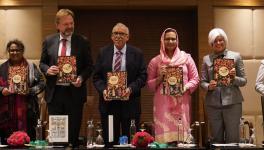When NHRC Also Celebrated Manusmriti!
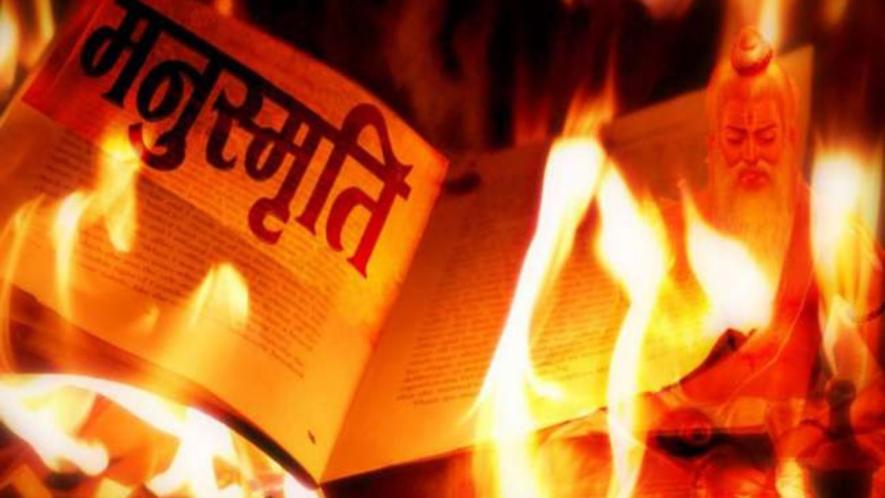
Image Courtesy: countercurrents.org
It is the firm opinion of this conference that Manusmruti, taking into consideration its verses (statements) which undermined the shudra caste, thwarted their progress, and made their social, political, and economic slavery permanent, and by comparing them with the principles enunciated in the above part of the manifesto of birthrights of the Hindus, is not worthy of becoming a religious or a sacred book. And in order to give expression to this opinion this conference is performing the cremation rites of such a religious book which has been divisive of people and destroyer of humanity...
(Resolution at Mahad Conference, December 25, 1927, Page 351, Mahad: The Making of the First Dalit Revolt' - Anand Teltumbde, Aakar Books, 2015)
It was the period when India was celebrating Azadi ka Amrit Mahotsav. Countless programmes were being held.
Little did anyone notice then how the National Human Rights Commission (NHRC) had joined its own voice in these celebrations. The best possible method it found was to share its vision about the Indian situation and its sources of inspiration.
It came out with a document where it shared a glimpse of how it viewed human rights.
“Ancient Indian literature, including texts like the Vedas, Upanishads, and various Dharma Shastras (texts on ethics and duties), contains references and teachings that resonate with the principles of human rights”, .. “The Manusmriti, while reflecting the social norms of its time, also outlines principles of justice, including punishment proportionate to the crime”.
Little did the leading lights of NHRC, headed by Justice ( retd) Arun Kumar Mishra, remember the fact (or did they deliberately disremember it?) what Bhimrao Ambedkar, the great social reformer, who was a chairman of the drafting committee of the Constitution, had said about this religious scripture. How he had led a historic satyagrah - termed Mahad Satyagrah - ( 1927) --where he had led thousands of people to burn the Manusmriti for it anti-human content..(December 25, 1927) underlining in the resolutions held there how it undermined the shudra caste, thwarted their progress, and made their social, political, and economic slavery permanent (Resolution at Mahad Conference,December 25, 1927, Page 351, Mahad : The Making of the First Dalit Revolt' - Anand Teltumbde, Aakar Books, 2015)
This was not the first instance (or the last one) of inadvertent or deliberate invisiblising of the real content of Manusmriti, which was considered "[d]ivisive of people and destroyer of humanity..." by the conference held under the leadership of Dr Ambedkar.
It would not be incorrect to say that the decade of Narendra Modi’s rule (2014-2024) has been a significant period where such attempts at normalisation or sanitisation of Manusmriti have continued unabated. Such interventions are visible at the juridical level or institutional level, as also at the level of cultural celebrations or even courses in the university to textbooks for students.
Merely a year ago, the Gujarat High Court had made national headlines when it had talked of girls getting married at 17 years, while deliberating on the plea of abortion filed by a minor girl's father. The said judge had not immediately ordered for termination of this pregnancy, but had rather advised the hapless father to read Manusmriti afresh to update himself on the thinking. Justice Samir J Dave observed,
“In the older times, it was normal for girls to get married by 14-15 years of age and to have a child before the age of 17...You will not read it, but do read Manusmruti once for this.”
Or, here was another judge of the Delhi High Court who had openly praised Manusmriti for 'giving respect to women' (She was speaking at a programme where she had been invited by industry body, FICCI).
Her words were:
“I really think we are a blessed lot of women in India and the reason for that is our scriptures have always given a very respectable position for women and as Manusmriti itself says that if you don’t respect and honour women, all the pooja path that you may do has no meaning. So I think our ancestors and Vedic scriptures knew very well how to respect women,”
Maybe because of the 'pearl of wisdom' by NHRC or the observations by these judges, new found legitimacy being given to Manusmriti has become a fact now.
In fact, a study done by a researcher/author says that there is rising trend today of 'acceptance and validation of Manusmriti by the higher echelons of the Indian judiciary'. It has slowly caught on and it has acquired tremendous pace with 'rise of virulent Hindutva':
As both SCC Online and indiankanoon.org indicate, between 1950 and 2019, the Manusmriti has been thus used for the by the Supreme Court and several High Courts a total of 38 times, 26 of those (nearly 70%) being between 2009 and 2019, a period coinciding with the rise of virulent Hindutva across the subcontinent. Between 1989 and 2019, the Supreme Court has used Manusmriti in making their decisions in a total of 7 times. (-do-)
Look at Banaras Hindu University (BHU), which had undertaken a research project only last year to study the ápplicability' of Manusmriti under its PhD programme.
The university’s Department of Dharmashastra and Mimansa, whose curriculum already includes studying the Manusmriti among ancient Indian scriptures, proposed (2023) researching the “applicability” of Manusmriti in Indian society. It had made plans to use the funds received under the Centre’s Institutes of Eminence scheme, which provides research and development grants of up to Rs 1,000 crore each to 10 select public-funded institutions.
The BHU’s proposal seemed anachronous—and not just because it involves spending money on an esoteric subject, while public universities face a severe fund crunch forcing them to cut down even on essential expenses.
The NHRC's sudden fascination for Manusmriti, or various higher courts extolling Manusmriti resonates with what legal scholar Mohan Gopal had observed about the composition of top judiciary. In a speech in an event organised by Live Law, he had elaborated that 'The Number of Theocratic Judges Who Find Source Of Law In Religion Than Constitution has Increased:
"An increase in traditionalist/ theocratic judges - as it happened in Modi led NDA regime is essentially part of two- part strategy to achieve the goal of establishing Hindu Rashtra by 2047, not by overthrowing the Constitution but by interpretation by the SC as a Hindu Document" (-do)
First step involves appointing judges who are ready to look beyond and the second phase which will now begin where judges will identify the source and it began with the Hijab judgement ...
..We can slowly reach a stage where we can say that India is a Hindu Theocracy under the same constitution- as reinterpreted by the SC , so the idea is to hijack the judiciary and establish a Hindu Theocracy (do-)
The outcome of this battle to maintain the judiciary’s independence and save it from interference by the executive will have long-term consequences on democracy in India.
Aakar Patel, a human rights activist and chairperson of Amnesty International India takes up the discussion further around this above speech. He raises the point of how oligarchy here is opposed to rules that India finds opposition in the Constitution, which stresses values like equality, secularism, dignity and so on and this is unlike Pakistan, where both are aligned.
Second, he elaborates on how there is absence of diversity in the judiciary here, which has facilitated its capture.
The fact remains that people, and the formations concerned with these developments, will have to strive unitedly to save the core principles and values of the Constitution.
Before we conclude, it is interesting to see that the trajectories of the biggest and the strongest democracy of the world have interesting commonalities.
In fact, when there are growing concerns here about slow dominance of theocratic judges, one can see the US judiciary is also facing similar changes. Not some time back, Louisiana decided to force public schools to display Ten Commandments in public schools:
Louisiana’s decision to force public schools to display the Ten Commandments is the latest fallout from a spate of controversial rulings from the rightwing supermajority of the US supreme court which has opened up a Pandora’s box that is fueling efforts to turn America into a theocratic state.
It is heartening to know that ACLU (American Civil Liberties Union), with due help from other organisations, has approached the Supreme Court to cancel this ordinance emphasising that this is nothing but 'religious coercion''
The writer is an independent journalist. The views are personal.
Get the latest reports & analysis with people's perspective on Protests, movements & deep analytical videos, discussions of the current affairs in your Telegram app. Subscribe to NewsClick's Telegram channel & get Real-Time updates on stories, as they get published on our website.











